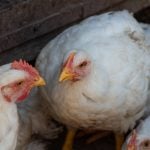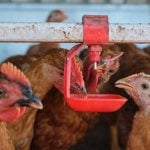Nutrient applications typically come to mind first when you think about variable-rate technology (VRT). But as precision ag expert and variable-rate pioneer Dennis Bulani points out, there are many ways you can use variable-rate technology to boost production and the profitability of your farm.
Bulani has been a staunch proponent of variable-rate farming ever since he first started experimenting with variable-rate fertilizer management on his family farm in Biggar, Sask., in the early 1980s. He’s now one of the largest independent ag retailers in Saskatchewan, with a chain of Rack Petroleum Ltd. stores spread around the province — and dispensing agronomic advice through his Ultimate Yield Management Institute is an important aspect of his business.
During a virtual Ag in Motion event last year, and more recently in an interview with Grainews, Bulani talked about some of the opportunities and obstacles of integrating variable-rate agronomy on farms.
Here’s what he had to say about some different ways of using variable-rate technology — not just for nitrogen and other nutrient applications but also for irrigation, crop desiccation, herbicides, fungicides and insecticides — and how they stacked up to one another in terms of potential yield, cost savings and logistics (see Table 1 below).

Variable-rate irrigation
Bulani considers variable-rate irrigation one of the most exciting — and useful — applications of the technology to emerge in recent times.
In fact, if you’re thinking about adding irrigation to your farm, Bulani says it’s a “no-brainer” to consider variable-rate pivots if you want to prevent water seeps and saline areas. “If you’re going to build a new irrigation system, make a plan so you’re not overwatering those low spots, and the only way you can do that is variable-rate water.”
There are plenty of cautionary tales about the dangers of overwatering and long-term saline damage in the Prairies, such as what’s been happening in the Irrigation Belt around Outlook, Sask., Bulani adds.
Read Also

Claas brings 1000 Series SP forage harvesters to Canada
In mid-August, Claas unveiled its new line of Jaguar forage harvesters at an event in Visalia, California, deep in the heart of that state’s dairy region.
“A lot of older systems in that area have been putting on a constant rate of water and they haven’t been VR-ing it. As a result, they’re overwatering all of the low-lying areas and a lot of fields … have gone saline because of overwatering.” Bulani maintains there are places in the Outlook area where up to 20 per cent of the fields are not growing anything because of saline conditions.
Of course, underwatering can also result in lost yield if crops aren’t receiving sufficient moisture.
“Specific watering to soil-type zone or slope is basically reaching full yield potential,” Bulani says, noting in addition to the yield benefits, there can be considerable cost savings for farmers who invest in variable-rate irrigation if they’re paying for their irrigation water.

Bulani uses a Zimmatic full variable-rate system on his own farm and he took measurements from soil probes to write prescription maps for his fields.
“The program I have in my pivot right now is to put up to an inch of water on the hills and as little as three-tenths of an inch in the low spots where there’s sufficient moisture,” he says. During an exceptionally dry season like last year, he typically doesn’t switch the variable rate on his pivot until really hot periods at the peak of the summer.
The logistics around variable-rate irrigation can be more complicated than other variable-rate applications. “You need to plug a map into your panel on the irrigation system. Because it’s water, it might be a little more complex to design the prescription, although I didn’t find that to be the case on mine,” says Bulani.
Variable-rate desiccation
Bulani says variable-rate desiccation is a good fit for pea and lentil crops.
“Typically, that’s where the most logistically practical area would be,” he says. “If you look at pulse crops in the fall, quite often the hilltops are almost ripe. They really don’t need any (desiccant).”
If you want to apply a herbicide desiccant like Reglone, for example, you could set your sprayer to 15 gallons of water and the recommended rate of Reglone and apply this to mid-slope areas, Bulani says. On the hilltops, set your sprayer on 10 gallons of water and on the low spots, where the canopy is heaviest, increase it to 20 gallons of water, thereby varying the rate of Reglone and the rate of water.
According to Bulani, the potential yield increase you’d get from doing a variable-rate application like this would likely be low to medium. “The only yield increase you’ll get from the desiccant is you’ll stop (the crop) from shelling out sooner rather than later. It’s not as big of a number,” he says.
You could probably count on some cost savings as well, since you’d be using less or no desiccant in those areas where the crop is more mature. As for logistics, “it’s easy. Just plug in a map and away you go,” he says.
The practice of variable-rate desiccation isn’t as popular as it could be, says Bulani, but he’s encouraged to see “more and more lentil growers are finding it to be quite an easy thing to do. We do have some growers doing that now.”

Variable-rate fungicide
The practice of applying fungicides selectively on farms can make a lot of sense financially, says Bulani.
“If you have low areas in your field that are extremely wet and extremely prone to high fusarium or sclerotinia (pressure), then obviously if you put a fungicide in that area, you’re going to get a high return because you’re going to stop or mitigate the disease,” he says, adding selectively targeting areas with the thickest vegetation could also contribute to higher yields.
The cost savings are likely going to be high, especially since fungicides are so expensive these days, adds Bulani. “Of course, it’s also easy to do, so we’re seeing more and more people use variable-rate fungicide all the time.”
Bulani says variable-rate fungicide isn’t something he uses on his farm. If conditions are right for sclerotinia in a canola crop, for example, there’s a good chance of it spreading quickly and becoming a potential problem throughout the whole field, he explains.
“Practically speaking, as a grower I would not risk varying fungicide because I thought I was going to save a few dollars,” he says.
Variable-rate herbicide
Bulani isn’t aware of anyone doing much variable-rate herbicide. For one, “most growers want all of their weeds dead,” and he also doesn’t think the technology is there yet for developing the herbicide prescription maps needed for effective variable-rate weed control.
However, precision sprayers that selectively target weeds — something Bulani says could be considered a form of variable rate — are becoming more common on Prairie farms.
Bulani maintains there would be some cost savings to variable-rate herbicide applications if you were able to lower your rates in some areas of the field, but he doesn’t expect it would make that much of a difference yield-wise.
There’s a chance the practice could cause problems with weed resistance if not done properly. “I have a concern that if you’re going to variable rate herbicide that you stick to the label rate (because) you’ve got to watch you’re not underapplying herbicides and adding to the resistance issues we have with weed control.”
Variable-rate insecticide
Like for variable-rate weed control, Bulani says the toolset is lacking for variable-rate insecticide applications.
Farmers usually spray the whole field when they’re targeting bertha army worms, for example, even if the pest is only in certain areas within the crop. “Would it be practical to just spray the areas where the actual army worms are feeding? Yes, it would be. But, currently, there is no technology I’m aware of that would actually detect they are in fact there.”
The research division of his company is currently trying to come up with a way to detect insect activity using sensors that are not necessarily related to biomass. If there was a way to heat-sense insects, for instance, it would have huge potential, Bulani says.
“Is the technology even here yet? No, but it’s close (where we could) use insecticides only where they’re needed and there are bugs.”
















